Oct. 5, 2016:
Breast cancer is the second most common kind of cancer in women, behind skin cancer. About 1 in 8 women born today in the United States will get breast cancer at some point, according to the U.S. Department of Health and Human Services. Each year in the United States, more than 200,000 women get breast cancer and more than 40,000 women die from the disease. October is National Breast Cancer Awareness Month — a time to engage, mobilize, and learn — and the Big Ten Cancer Research Consortium brings a wealth of progress to the table.
Komen Tissue Bank travels to Detroit
-

Amruta Phatak of Indiana University and Dr. Justin Colacino and Chanese Forte of the University of Michigan process breast tissue during the recent Susan G. Komen Tissue Bank at the IU Simon Cancer Center collection event in Detroit.
Nearly 200 women from the Detroit area selflessly donated a piece of themselves on Sept. 24 when the Susan G. Komen Tissue Bank at the IU Simon Cancer Center held a breast tissue collection at the Barbara Ann Karmanos Cancer Institute. Detroit’s diverse population led the Komen Tissue Bank, the only normal breast tissue bio-repository of its kind in the world, to the Motor City. By using samples from women without breast cancer, researchers will be able to determine the differences between healthy and cancerous tissues, which will lead to a better understanding of the disease. How does it work? During the donation process, a tissue sample is taken from one breast with local anesthesia and a needle. The amount of tissue taken is about one gram (or the size of two peas.) A trained surgeon or radiologist performs a core needle biopsy. The samples are processed immediately on-site to ensure consistent and high quality samples. Prior to Detroit, other collections have been held in Chicago; Louisville, Ky.; Orange County, Calif.; and Houston in addition to those in Indianapolis. In 2017, the tissue bank will host a collection in New York City. Anna Maria Storniolo, MD, is the executive director of the tissue bank.
Acupressure Reduces Fatigue in Breast Cancer Survivors
A technique called relaxing acupressure could offer a low-cost way to manage symptoms, including sleep loss and fatigue, in those with breast cancer.
Fatigue is one of the most common long-term effects of breast cancer treatment. About a third of women experience moderate to severe fatigue up to 10 years after their treatment ends.
The study, published in JAMA Oncology, found acupressure reduced fatigue by 27 percent to 34 percent over six weeks. Two-thirds of women who did relaxing acupressure, a particular subtype of the healing method, achieved normal fatigue levels.
“Fatigue is an underappreciated symptom across a lot of chronic diseases, especially cancer. It has a significant impact on quality of life. Acupressure is easy to learn and patients can do it themselves,” says study author Suzanna Zick, ND, MPH, associate research professor of family medicine at the University of Michigan.
Small Implanted Device Could Help Limit Metastatic Breast Cancer
The tiny, scaffoldlike device facilitates early detection of metastatic cancer cells and improves survival, a new study finds.
A small device implanted under the skin can improve breast cancer survival by catching cancer cells, slowing the development of metastatic tumors in other organs and allowing time to intervene with surgery or other therapies.
These findings, reported in Cancer Research, suggest a path for identifying metastatic cancer early and intervening to improve outcomes.
“This study shows that in the metastatic setting, early detection combined with a therapeutic intervention can improve outcomes. Early detection of a primary tumor is generally associated with improved outcomes. But that’s not necessarily been tested in metastatic cancer,” says study author Lonnie D. Shea, PhD, William and Valerie Hall Chair of Biomedical Engineering at the University of Michigan.
The Masonic Cancer Center, University of Minnesota continues to make inroads in breast cancer research, both on the bench and in the clinic. Philanthropic support has been key to many of the advances being made.
Researchers Report on Enzyme that Leads to a Common Mutation
Reuben Harris, PhD, Genetic Mechanisms of Cancer Research Program member, along with collaborators from University of Saskatchewan, reported in the latest Nature Communications the discovery of an enzyme known as APOBEC3H-1 that is most likely the cause of a common type of mutation in breast cancer cells. Past research led by Harris showed that APOBEC3B is a source of mutations in breast cancers with APOBEC footprint. However, Harris and others also found that some breast tumors still have an APOBEC footprint but no APOBEC3B. Looking at variants of another APOBEC family member, they found the enzyme APOBEC3H-1, which can access the nuclear DNA of a cell. These findings are important because they provide a molecular explanation for a major source of mutation in many different types of cancer. The results point the way to fine-tuning the treatments of these cancers by inhibiting these enzymes in order to limit the development of mutations that undermine many current cancer therapies.
I-SPY2 Clinical Trial Update
I-SPY 2 TRIAL draws on a database of multisite patient data and cross-institutional collaborations to speed the testing of novel therapies for patients with recently diagnosed advanced local breast cancer. Masonic Cancer Center Director Douglas Yee, MD, leads the trial at the University of Minnesota. The drug neratinib is one of the first agents to show effectiveness in an I-SPY 2 clinical trial. Another experimental drug, veliparib, with carboplatin when given in combination therapy has shown promise in the treatment of those with a triple-negative breast cancer diagnosis. In a phase II trial, 51 percent of women receiving the novel drug achieved a complete response as compared to a 26 percent rate in the control group receiving standard care. Veliparib added to carboplatin and paclitaxel is now being further evaluated in a phase III trial to confirm the I-SPY 2 results.
Raising Awareness, Raising Funds
Every day 113 mothers, daughters, wives, sisters, friends, and men die from metastatic breast cancer (mbc) in the United States. That’s more than 40,000 lives every year. Team Judy — a group of longtime friends who grew tired of receiving phone calls from one another sharing that a friend or loved one had been diagnosed with breast cancer — has decided to do something about it! Their goal is to raise money to fund research grants for metastatic breast cancer and cancer metastases at the Masonic Cancer Center, University of Minnesota, with the hope that someday metastatic breast cancer will be a chronic disease, instead of one where the 5-year survival rate is just 25 percent. For Breast Cancer Awareness Month, Old Log Theatre is supporting Team Judy and the Masonic Cancer Research Center, University of Minnesota, by sponsoring a fundraiser on Oct. 6 at the showing of “Million Dollar Quartet” and donating part of the proceeds from ticket sales to this goal.
A Story of Triumph
- It started with a sports bra. That’s when Ashli Brehm, a then 33-year-old, noticed the lump in her breast. The Omaha mother of three went to her general practitioner who scheduled a mammogram.
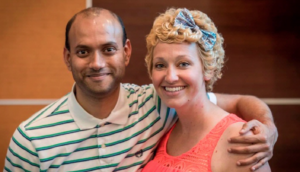 Brehm, pictured here with her medical oncologist Pavankumar Tandra, MD, said, “I have no family history of breast cancer. I thought this shouldn’t be an issue, but I immediately started crying. I think I knew. I think I knew.” In September 2015, Brehm was diagnosed with stage 2 breast cancer. Dr. Tandra started her on six rounds of chemotherapy, followed by 28 radiation treatments at the Multidisciplinary Breast Cancer Clinic at Nebraska Medicine – Cancer Center at Village Pointe.
Brehm, pictured here with her medical oncologist Pavankumar Tandra, MD, said, “I have no family history of breast cancer. I thought this shouldn’t be an issue, but I immediately started crying. I think I knew. I think I knew.” In September 2015, Brehm was diagnosed with stage 2 breast cancer. Dr. Tandra started her on six rounds of chemotherapy, followed by 28 radiation treatments at the Multidisciplinary Breast Cancer Clinic at Nebraska Medicine – Cancer Center at Village Pointe.
“I feel so fortunate,” Brehm said. “I haven’t had to look on the Internet for answers. I don’t question what my doctors are giving me. We’re really fortunate to have this facility right here in Omaha. I truly believe they are curing people.”
Read Ashli Brehm’s full story, published by Nebraska Medicine public relations.
On Sept. 22, Brehm celebrated her one-year “Cancerversary” at Nebraska Medicine – Village Pointe. Surrounded by family, friends and members of her medical team, Brehm thanked everyone for their support. A special screening of Brehm’s Nebraska Medicine YouTube video also was shown.
“Looking back, I know this was the right place for me to be. From the gathering stage, to the diagnosis and my treatment plan,” Brehm said. “I’m just happy to be alive and cancer free.”
On Oct. 9, Brehm will participate in Omaha’s Race for the Cure and volunteer inside the Fred & Pamela Buffett Cancer Center tent, which will feature a photo booth, sketch artist, pink sunglasses and a #SpreadGoodness video.
Breast Cancer Symposium
On September 22 – 25, Lurie Cancer Center hosted the 18th Annual Lynn Sage Breast Cancer Symposium. Nearly 700 medical experts and clinicians from around the world came together in Chicago to discuss breast cancer prevention, screening, and treatment. Northwestern University’s Lynn Sage Breast Cancer Symposium has been called the most valuable breast cancer meeting worldwide for the practicing clinician.
Horiuchi Receives $450,000 Komen Research Grant

Dai Horiuchi, PhD
Dai Horiuchi, PhD, assistant professor of pharmacology and a member of the Robert H. Lurie Comprehensive Cancer Center of Northwestern University, has been awarded a $450,000 research grant from Susan G. Komen. The award will be used to conduct a preclinical laboratory study to determine the utility of a potential targeted therapy against triple-negative breast cancer (TNBC). A clinically challenging form of the disease, TNBC is the only form of breast cancer for which no FDA-approved targeted therapies currently exist.
The primary focus of Horiuchi’s lab, established in 2015, is on the mechanisms of tumor progression in TNBC, and identifying novel and safer therapeutic targets and treatment strategies in order to significantly lower mortality rate associated with TNBC. According to Horiuchi, the lack of targeted therapies for TNBC is due to how little is understood about how TNBC occurs and progresses.
“We have identified a promising target called PIM kinase,” says Horiuchi. “Now we would like to expand our prior studies to establish PIM inhibition as a clinically relevant targeted therapy specifically against the most problematic subset of TNBC that appears to be driven by the MYC oncoprotein. We hope that the successful completion of this study will result in the initiation of early-phase clinical trials here at Northwestern.”
Cancer MoonShot 2020 Inflammatory Breast Cancer Working Group
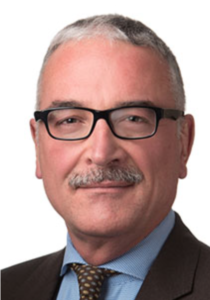
Massimo Cristofanilli, MD
Massimo Cristofanilli, MD, is associate director for translational research and precision medicine at the Robert H. Lurie Comprehensive Cancer Center of Northwestern University. An expert in the translational research and treatment of patients with inflammatory breast cancer (IBC), he is also director of the Lurie Cancer Center OncoSET Precision Medicine Program. Dr. Cristofanilli was selected to chair the Cancer MoonShot 2020 Inflammatory Breast Cancer Working Group. “IBC is entirely different from other types of breast cancer – as a result, the symptoms, prognosis, and outcomes all require specific, customized attention,” said Dr. Cristofanilli. “There are an estimated 15,000-20,000 new cases of IBC diagnosed annually. By joining the Cancer MoonShot 2020 program, the goal of the Inflammatory Breast Cancer Working Group is to provide patients with novel immunotherapies and combination approaches for treating their cancer. Our hope is to one day address IBC before it can advance to an incurable Stage IV, and we’re looking forward to working alongside some of the brightest minds in cancer research to make this a reality.” Dr. Cristofanilli is also a member of the Cancer Moonshot 2020 Breast Cancer Working Group, chaired by William Gradishar, MD, deputy director of the Clinical Network at the Lurie Cancer Center.
On October 21, Dr. Cristofanilli will receive the 2016 IBC Impact Award from the Inflammatory Breast Cancer Foundation, and will be honored at a reception to be held at Northwestern Memorial Hospital.
Lynn Sage Breast Cancer Town Hall: A free event
On Sunday, Oct. 30, Lurie Cancer Center will host the Lynn Sage Breast Cancer Town Hall. This free, interactive discussion is a unique opportunity for patients and families to have their questions answered by Lurie Cancer Center specialists in medical, surgical, and radiation oncology, as well as supportive oncology. The panel of breast cancer experts, moderated by William Gradishar, MD, director of the Maggie Daley Center for Women’s Cancer Care and deputy director of the Clinical Network at the Lurie Cancer Center, will discuss breakthroughs in breast cancer research and treatment.
Event details and registration.
The Lynn Sage Breast Cancer Survivorship Program within Lurie Cancer Center’s Cancer Survivorship Institute was launched last year to address the unique need of women as they complete treatment for breast cancer and enter into survivorship.
A Spanish language breast cancer program, hosted in partnership with ALAS-WINGS, will be on Sunday, Oct. 30.
Taking Aim at Triple-Negative Breast Cancer
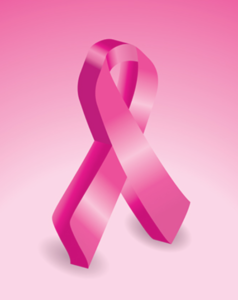
Gift from Val Skinner Foundation helps Rutgers Cancer Institute Precision Medicine Program
The precision medicine approach involving DNA sequencing to pinpoint specific alterations that can be targeted with anti-cancer therapies is becoming an alternate treatment avenue for those with poor-responding cancers. But there are still some subsets of disease that are elusive to this approach. Such is the case for triple-negative breast cancer, but investigators in the Precision Medicine Program at Rutgers Cancer Institute of New Jersey are on track to change that, thanks to a $50,000 gift from the Val Skinner Foundation.
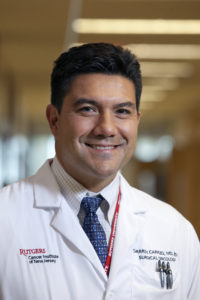
Darren Carpizo, MD, PhD, surgical oncologist at Rutgers Cancer Institute of New Jersey
$250K Grant Supports Examination of Drug Compound on Common Cancer Mutation
- Award from Breast Cancer Research Foundation supports Rutgers Cancer Institute investigator
A $250,000 grant awarded to Rutgers Cancer Institute of New Jersey surgical oncologist Darren R. Carpizo, MD, PhD, will further aid the work of the physician-scientist in exploration of mechanisms behind the p53 gene – which is the most commonly mutated gene in human cancer. The funding from the Breast Cancer Research Foundation will help Dr. Carpizo build upon previous research from his laboratory examining a drug compound that restores tumor suppressor function of p53, with an aim of providing a foundation for the development of a new type of anti-cancer drug.
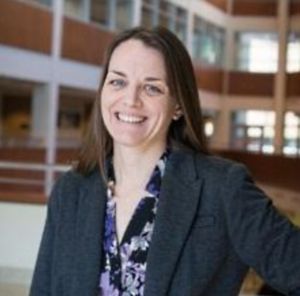
Dr. Amy Trentham-Dietz led a study that found the majority of women ages 50 to 74 can benefit if they have mammograms every two or three years.
New Study: Women with Dense Breasts Need More Frequent Screening
One size doesn’t fit all women in clothing, and neither should all women have mammograms on the same schedule, a new national study concludes.
A large computer modeling study led by Dr. Amy Trentham-Dietz of the University of Wisconsin Carbone Cancer Center found that the majority of women ages 50 to 74 can benefit if they have mammograms every two or three years. These women at average risk can retain most of the benefit of having mammograms less often and greatly reduce the chances of false positive results and unneeded biopsies and overdiagnosis, the study concludes.
New Imaging Technique Distinguishes Cell Types in Breast Tumor Environment
It is a long-standing paradox in diagnosing and treating cancers: Visualizing tumors in their natural environment gives a clearer picture of the disease and which therapies to use, but the best images require chemicals and antibodies and genetic changes that are neither safe nor practical in the clinic.
Now, an imaging study from the University of Wisconsin Carbone Cancer Center shows that different types of cells in the breast tumor microenvironment can be identified without the use of any added chemicals. The technique, which looks at differences in fluorescence of naturally-occurring molecules in a live mouse model, could lead to improved diagnosis and monitoring of breast cancers.
“It is becoming increasingly appreciated that tumors are composed of more than just cancer cells, and include cells of the surrounding connective tissue and the infiltrating immune system,” said Patricia Keely, PhD, professor of cell and regenerative biology at UW Carbone Cancer Center and senior author of the study. “It will be helpful if we can visualize and better understand all the cells that make up the tumor and its environment, and that is what this work has accomplished.”
Patient-Centered Innovations in Treatment
Radiation oncologist Bethany Anderson, MD, believes that treating patients compassionately is the most important part of her job.

Bethany Anderson, MD
“I’m all about my family – my husband and I have four children under the age of 8,” Anderson said. “The approach I take as a provider is to treat each person that I meet in the way that I would want my family to be taken care of.”
Anderson, an assistant professor of human oncology at the UW Carbone Cancer Center, plans and administers radiation therapy mostly to breast cancer patients, with a smaller focus on gynecological cancers and general radiation therapy. She recently updated us on advances in technology and personalized care in breast cancer radiation therapy.
Breast radiation oncology at the Carbone Cancer Center has long been at the forefront of treatment and technology, and Anderson highlighted some ways she and her colleagues strive to provide the best care possible.
The first two are relatively simple changes in treatment plans. Sometimes all that needs to be adjusted is the position in which a patient receives treatment. For example, studies have shown that some women may be best treated in the face down, or prone position, with the treated breast falling through a hole. Also, traditionally breast cancer patients are treated with 6 weeks of radiation therapy, but Anderson said “for the right person” that course can be compressed into 3-4 weeks, reducing skin reactions and fatigue.
Technological advances include the addition of MRI-guided radiation therapy and brachytherapy, or partial breast irradiation.
“For each patient, we always do a treatment planning image that includes a CT scan and sometimes an MRI,” Anderson said. “We have the second MRI-guided radiation machine in the world, called ViewRay, that allows us to visualize with MRI the area we’re treating before and during treatment to make sure we’re targeting the area accurately.”
In breast brachytherapy, radiation oncologists treat just the portion of breast tissue adjacent to the cancer site from the inside using plastic tubes, or catheters, as opposed to an external radiation beam. Brachytherapy treatment occurs twice a day and lasts only four to five days, then the catheters are removed. Anderson said that UW has historically been a leader in the development of breast brachytherapy, and continues to do so.
“One of our brachytherapy physicists, Dr. Rupak Das, developed the most recently introduced catheter that combines the best features of the previous ones,” Anderson said. “Also, I completed a brachytherapy fellowship in Paris, because there are certain areas of Europe where the therapy has advanced faster than in the US.”
Individualized Treatment Plans
“When it comes to treatment options for breast cancer, we’re really fortunate to have a huge variety of the most modern technologies available in radiation oncology,” Anderson said. “We personalize the experience and we’re not pigeon-holed into treating all women on the same machine or in the same way.”
With the multitude of different options, such as those mentioned above, Anderson and other radiation oncologists can look at several factors and develop recommendations for each patient.
“In some cases, there’s one treatment option that is clearly most appropriate for a particular woman, so we spend most of our time focusing on that,” Anderson said. “Many times, however, radiation treatment plans are really influenced by patient preference: I’ll meet a woman, talk about the side effects, the length of treatment, and the expected outcomes and see what she says.”
Carbone Cancer Center radiation oncologists also go to great lengths to limit radiation dose to the heart in women with left-sided breast cancer. CT-guided treatment planning to visualize the heart and special breathing techniques during treatment can be very helpful. Tomotherapy is another treatment option, in which Anderson says “the radiation lines are curved, not straight, so it’s a heart-sparing technology that is useful in some women.”
Have You Joined the Fight Against Cancer?
![]() Did you know you can directly support the team efforts of the Big Ten Cancer Research Consortium? Make a gift today!
Did you know you can directly support the team efforts of the Big Ten Cancer Research Consortium? Make a gift today!
This story was compiled by Alecia Burkhardt, communications associate for the Big Ten Cancer Research Consortium, with contributions from Indiana University Melvin and Bren Simon Cancer Center, the University of Michigan Comprehensive Cancer Center, the University of Minnesota Masonic Cancer Center, the Fred & Pamela Buffett Cancer Center, the Robert H. Lurie Comprehensive Cancer Center of Northwestern University, Rutgers Cancer Institute of New Jersey, and the UW Carbone Cancer Center.
About the Big Ten Cancer Research Consortium: The Big Ten Cancer Research Consortium was created in 2013 to transform the conduct of cancer research through collaborative, hypothesis-driven, highly translational oncology trials that leverage the scientific and clinical expertise of Big Ten universities. The goal of the Big Ten Cancer Research Consortium is to create a unique team-research culture to drive science rapidly from ideas to new approaches to cancer treatment. Within this innovative environment, today’s research leaders collaborate with and mentor the research leaders of tomorrow with the unified goal of improving the lives of all patients with cancer.
About the Big Ten Conference: The Big Ten Conference is an association of world-class universities whose member institutions share a common mission of research, graduate, professional and undergraduate teaching and public service. Founded in 1896, the Big Ten has sustained a comprehensive set of shared practices and policies that enforce the priority of academics in the lives of students competing in intercollegiate athletics and emphasize the values of integrity, fairness and competitiveness. The broad-based programs of the 14 Big Ten institutions will provide over $200 million in direct financial support to almost 9,500 students for more than 11,000 participation opportunities on 350 teams in 42 different sports. The Big Ten sponsors 28 official conference sports, 14 for men and 14 for women, including the addition of men’s ice hockey and men’s and women’s lacrosse since 2013. For more information, visit www.bigten.org.
















Subscribe to the Big Ten CRC Newsletter X
X Facebook
Facebook YouTube
YouTube